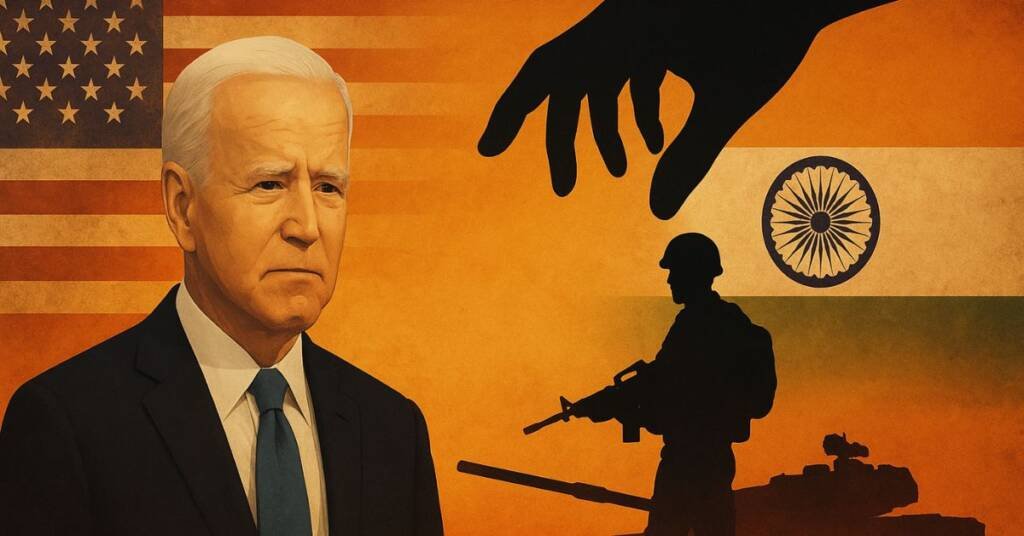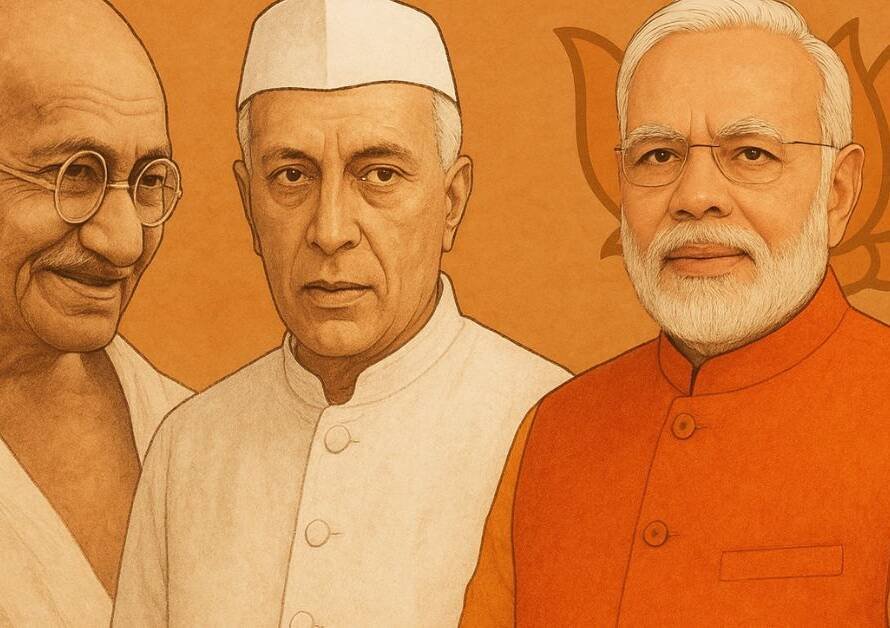USA Orchestrating
- Recent developments indicate that the USA orchestrating groundwork for a prolonged and destabilizing military conflict between India and Pakistan — a scenario that could mirror the Ukraine war but on the South Asian stage.
- Multiple high-level meetings have been reported between U.S. representatives, the Pakistan Army Chief, and even senior Bangladeshi officers. These engagements strongly suggest a coordinated plan to put military and hybrid pressure on India from both its western and eastern borders.
The American playbook is familiar:
- From the West — Pakistan’s regular army offensive.
- From the East — Jihadi infiltration and sabotage from Bangladesh.
- From Within — Deep internal sabotage operations targeting infrastructure, communications, and civil harmony.
- Just like in Ukraine, the U.S. would not directly participate but would act as the “Invisible Commander” — providing live satellite feeds, logistics, weapons, and ammunition to Pakistan, with a strict mandate to hit U.S.-selected targets in India.
- This time, however, Washington’s plan allegedly involves preventing Pakistan from halting the war early. The objective would be to keep India engaged in a grinding conflict, weakening its economy, diverting its military resources, and slowing its global rise.
- The risk of false flag operations is also high — incidents that could be used to rally certain Islamic countries into siding against India under the pretext of “defending” Pakistan. Another dangerous possibility is the weaponization of refugee influx — pushing trained jihadis disguised as “war refugees” into Indian territory to cause long-term instability.
Why This May Fail — Lessons from Operation Sindoor
- India has faced such orchestrated scenarios before. In Operation Sindoor, India demonstrated military warfare capabilities on par with — and in some cases superior to — the United States and Russia.
- This operation was allegedly backed in the background by the U.S. and China in support of Pakistan, but India’s strategic precision changed the game.
Key outcomes from Operation Sindoor:
- Destruction of Pakistan’s Nuclear Storage Base — India’s surgical strikes damaged a facility that not only stored Pakistan’s nuclear arsenal but also housed U.S. nuclear weapons stationed there for strategic leverage. This forced Washington to pull back.
- Neutralization of Chinese-backed Pakistani Military Hardware — Pakistan’s dependence on Chinese weaponry was exposed as a major weakness; many systems failed in actual combat scenarios.
- Swift and Decisive Conclusion — By combining intelligence superiority, long-range strike capability, and cyber warfare tools, India avoided getting trapped in a prolonged war — denying the U.S. the extended conflict it sought.
Why Today’s Scenario Is Even More in India’s Favor
Since Operation Sindoor, India’s geopolitical standing has only grown stronger:
- The United States may be attempting to replicate its Ukraine strategy in South Asia — using Pakistan (and potentially Bangladesh) as proxies to bleed India in a long conflict.
- However, India’s proven military capabilities, its strengthened alliances, and lessons from past operations mean that such a strategy could backfire spectacularly on Washington.
- Instead of being drawn into a prolonged war, India is positioned to use swift, decisive military action combined with diplomatic pressure to neutralize threats — ensuring that any attempt to weaken Bharat will meet with immediate and crushing retaliation.
🇮India is Ready — On Every Front, Against Every Conspiracy! ✅
🇮🇳Jai Bharat, Vandematram 🇮🇳
For old Blogs please visit our website www.saveindia108.in
👉Join Our Channels👈







